Table of Contents
Since the development of BOTOX® in the 1970s, the anti-wrinkle treatment has soared in popularity, becoming a staple in the aesthetics and cosmetic enhancement. It is most commonly used to address fine lines and wrinkles that appear naturally on the face over the years, reducing crow’s feet, smile lines, and other signs to restore a youthful appearance in a non-invasive and non-surgical way.
Soon, BOTOX® was joined by Dysport®, a similar treatment for glabellar lines located between the eyebrows. Similarly, Dysport® has become a popular cosmetic treatment for patients who want to remove naturally occurring age lines and frown lines.
It is important to note that while both Botox® and Dysport® utilize botulinum toxin type A, they are manufactured and marketed by entirely separate pharmaceutical companies. Botox® is produced by Allergan, an AbbVie company, while Dysport® is manufactured by Ipsen and distributed in the United States by Galderma.
What is BOTOX®?
BOTOX® injections are a treatment used for wrinkles, frown lines, and other age lines, as well as a variety of other conditions. According to its specifications, this versatile non-invasive procedure can even be used for eliminating body odor and reducing migraines.
Many might be surprised by the origins of the treatment; the name BOTOX® is short for botulinum toxin type A, which is derived from the bacterium responsible for botulism, a form of food poisoning.
You might be wondering, how did a substance from food poisoning make it into a cosmetic treatment for wrinkles?
Scientists found out that small and controlled doses of purified botulinum toxin, when applied locally in specific areas, could prevent muscles from moving for a period of up to several months.
When applied to certain facial muscles, the substance can smooth out wrinkles and fine lines. In other areas of the body, BOTOX® can treat muscle spasms, overactive sweat glands, and even potentially prevent migraines. It did not take long for scientists to find cosmetic applications for BOTOX®, and soon the Food and Drug Administration approved the use of BOTOX®.
Since then, the safety and convenience of BOTOX® injections for fine lines has been proven time and time again. That is why the treatment has become a staple in the industry, making BOTOX® for wrinkles one of the most sought after anti-aging procedures worldwide.
Is BOTOX® Safe During Pregnancy?
According to studies, BOTOX® is not dangerous, but it is also not known to be safe for use while pregnant. Due to this, the substance is classified as a Category C drug. It is recommended to err on the side of caution and avoid BOTOX® injections during pregnancy if possible, limiting exposure to unnecessary substances when fetal development is occurring in the body, since the long-term effects have not yet been determined.
If BOTOX® has been administered unknowingly to a patient who later discovers that they are pregnant, the odds are that there is no risk because of the very small doses used in cosmetic procedures. The substance is locally injected and will not enter the bloodstream, merely the area being treated.
Is BOTOX® Covered by insurance?
Insurance companies probably won’t cover BOTOX® injections for aesthetic purposes, but if the treatment is deemed medically necessary, then there is a better chance that insurance companies will cover BOTOX® injections. BOTOX® treatments are deemed medically necessary only when doctors determine that it can address health conditions such as migraines.
What is Dysport®?
Similar to BOTOX®, Dysport® is derived from abobotulinumtoxinA, a type of botulinum toxin like the substance used for BOTOX®. Developed in the 1980s after the success of BOTOX®, Dysport® is a fast-acting and long-lasting, clinically proven treatment that provides a natural way to smooth out wrinkles and reduce frown lines, particularly those located between the eyebrows, known as glabellar lines.
The mechanism of action is similar in that the botulinum-based substance is injected into the area to prevent muscle contractions for a period of time, addressing the cause of the lines, making them go away, so patients look more refreshed and youthful.
The different formula used for Dysport allows it to spread wider after being injected into the skin, making it ideal for addressing glabellar lines. Dysport® injections typically show their results after a few days, but can even noticed within 24 hours and will last for three to four months. Just like BOTOX®, Dysport® for forehead lines has become a popular procedure.
Is Dysport® Cheaper Than BOTOX®?
Each unit of Dysport® is cheaper than BOTOX®, but this is because of the formulation of Dysport®, which is diluted. This means that three Dysport® units match one unit of BOTOX®, which is why more units of Dysport® are needed to achieve the same results as BOTOX®. At times the cost of Dysport® can be comparable to the equivalent BOTOX® treatment.
Is Dysport® Better Than Botox?
Overall, Dysport® and BOTOX® are very similar. Their mechanism of action involves blocking nerve signals to the muscles. Because they use variations of the botulinum toxin in different compositions and dilutions, Dysport® and BOTOX® have different strengths and benefits, making each one ideal for certain types of cosmetic and aesthetic applications.
To know which treatment is best suited for your needs, doctors will assess each patient’s cosmetic needs and determine whether Dysport® or BOTOX® will be the better match for them.
BOTOX®
- BOTOX® is FDA-approved to treat more areas of the face than Dysport®
- Each dose of BOTOX® is more concentrated than Dysport®
- Results appear in a week to a month and last for several months
- Contraindicated for pregnant patients and those taking particular medications for muscle spasms
- Non-invasive, non-surgical procedure that takes less than 20 minutes with minimal recovery time
Dysport®
- Specialized for wrinkles and lines in the glabella area
- Dysport® is cheaper per dose
- Results appear within a couple of days and last between 3 to 4 months
- Dysport® cosmetic effects last longer than BOTOX® for some patients
- Contraindicated for patients with milk allergies, pregnant patients, and those taking particular medications for muscle spasms
- Non-invasive, non-surgical procedure that takes less than 20 minutes with minimal recovery time
Looking for where to have BOTOX® or Dysport® treatments for wrinkles and fine lines? Reach out to Young Medical Spa BOTOX® and Dysport® anti-aging treatment experts. We are a Diamond Level BOTOX® provider, a rank held by less than 2% of BOTOX® clinics.
The cosmetic specialists of Young Medical Spa’s clinics in Center Valley, Lansdale, and Wilkes-Barre, Pennsylvania, offer both BOTOX® and Dysport® injection treatments to minimize and prevent fine lines and wrinkles in the face from forming, resulting in a more youthful appearance.



